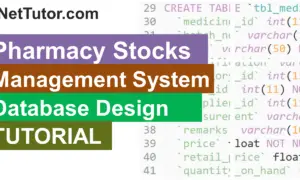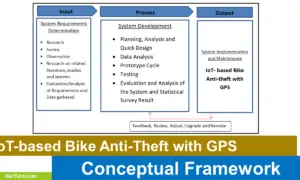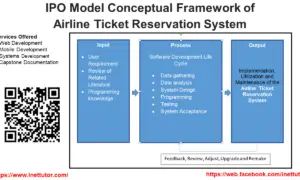Medical Transcription System ER Diagram
This article will walk you through the process of creating an entity relationship diagram, often known as an ERD, for the project entitled Medical Transcription System.
Medical Transcription System Description
Table of Contents
- Medical Transcription System Description
- ERD
- Step 1. In the Medical Transcription System we have the following entities:
- Step 2. After we have specified our entities, it is time now to connect or establish a relationship among the entities.
- Step 3. The last part of the ERD process is to add attributes to our entities.
- Summary
In medical transcription, the process of turning voice-recorded medical reports into text format is known as transcription. This is an extremely important practice in the medical area since it allows medical practitioners to get the reports of their patients in a timely and convenient manner. The medical transcribing system has been in use for many years and has made a significant contribution to increasing the efficiency of the medical field.
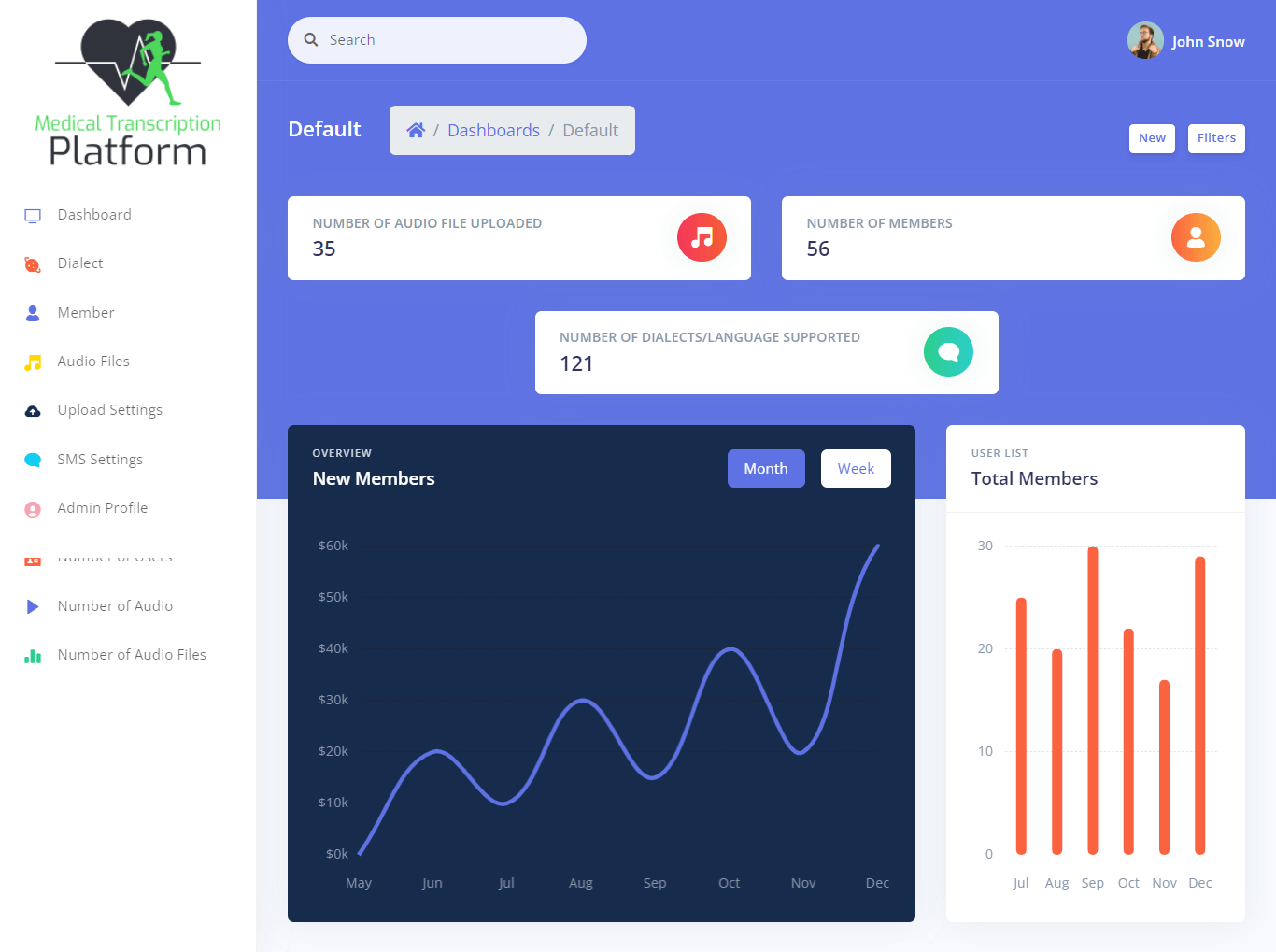
It is essential in the medical industry that the medical transcribing system is in place. Clinical workers can get patient reports in a rapid and simple manner thanks to this technology. The technology has been in operation for many years and has made a significant contribution to increasing the efficiency of the medical community. Today, clinicians all across the world rely on the medical transcribing system to maintain track of their patients’ medical histories and information. This information can be utilized to diagnose and treat patients, as well as to give medical professionals with a history of the individuals they are treating or caring for. Medical transcription systems are also used to construct medical records, which is another application for them. This documentation is crucial for a variety of reasons, one of which is that it allows doctors to keep track of the progress of their patients. Finally, the medical transcribing system is utilized in the creation of electronic health records, which is critical for the future of health-care administration. Doctors can ensure that their patients have access to their medical records at all times by utilizing a medical transcription system, which is available online. The medical profession has seen a significant increase in the efficiency and efficacy of its operations as a result of the medical transcribing system.
ERD
This is the first phase of the Medical Transcription System’s development, and it will serve as the foundation for the building of the system’s actual database in the future.
We will create an entity relationship diagram using the Medical Transcription System as an example and discuss the techniques that must be followed to complete the diagram development. Let’s start with the symbols used in the ER Diagram and talk about what they imply.
The entity depicted in the diagram below is represented by the rectangular form. We’ll use this item to create a database table for our Medical Transcription System at some time in the future.
A diamond’s shape can reveal how a relationship functions, such as how it fits together. This will have a significant impact. The ideal approach to do this is to use a main key to foreign key relationship.
The shape of the oval is a way to show the attribute for the entities specified. Columns or fields will be added to each table in the Medical Transcription System, and this will be the case.
We will follow the 3 basic rules in creating the ER Diagram.
- Identify all the entities.
- Identify the relationship between entities and
- Add meaningful attributes to our entities.
Step 1. In the Medical Transcription System we have the following entities:
- Member
- Audio
- Dialect
- Admin
- Upload Setting
- SMS Config
According to our approach, the Medical Transcription System is organized into six tables. Here’s what our database tables will look like as we work on the Medical Transcription System database structure. These entities will make up the database tables.
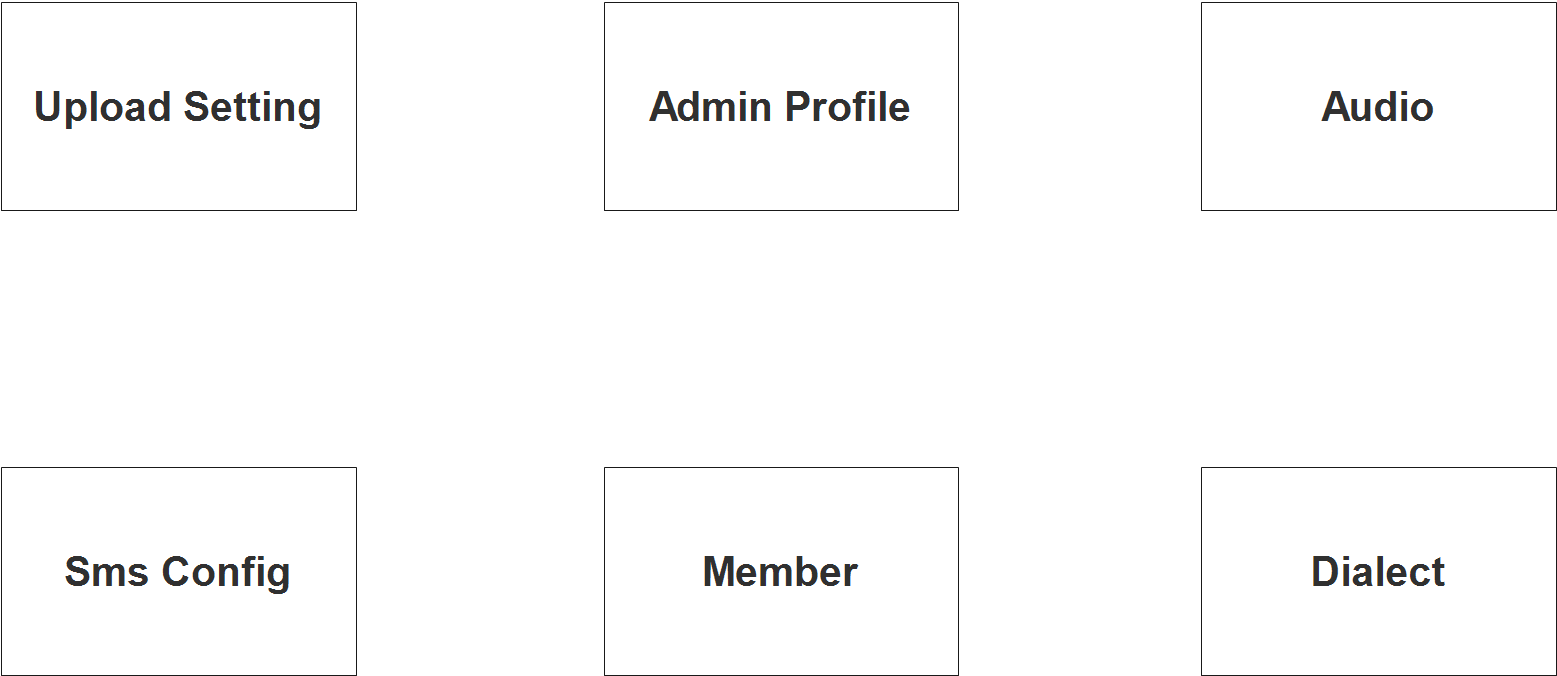
Step 2. After we have specified our entities, it is time now to connect or establish a relationship among the entities.
- The administrator of the system can update the upload setting such as file type allowed and the file size allowed (1 to 1 relationship). It is a one to one relationship since only 1 user can update the setting at a time.
- The administrator can also update the SMS settings; it includes the API and the password of the SMS API which is the iTexMo SMS Gateway (1 to 1 relationship).
- The administrator or system users can manage, approve and cancel the registration of the members (1 to many relationship).
- The members of this platform can receive and download audio recording of the conversation (1 to many relationship).
- The audio recording is in a form of dialect which will be uploaded and received by the member (1 to 1 relationship).
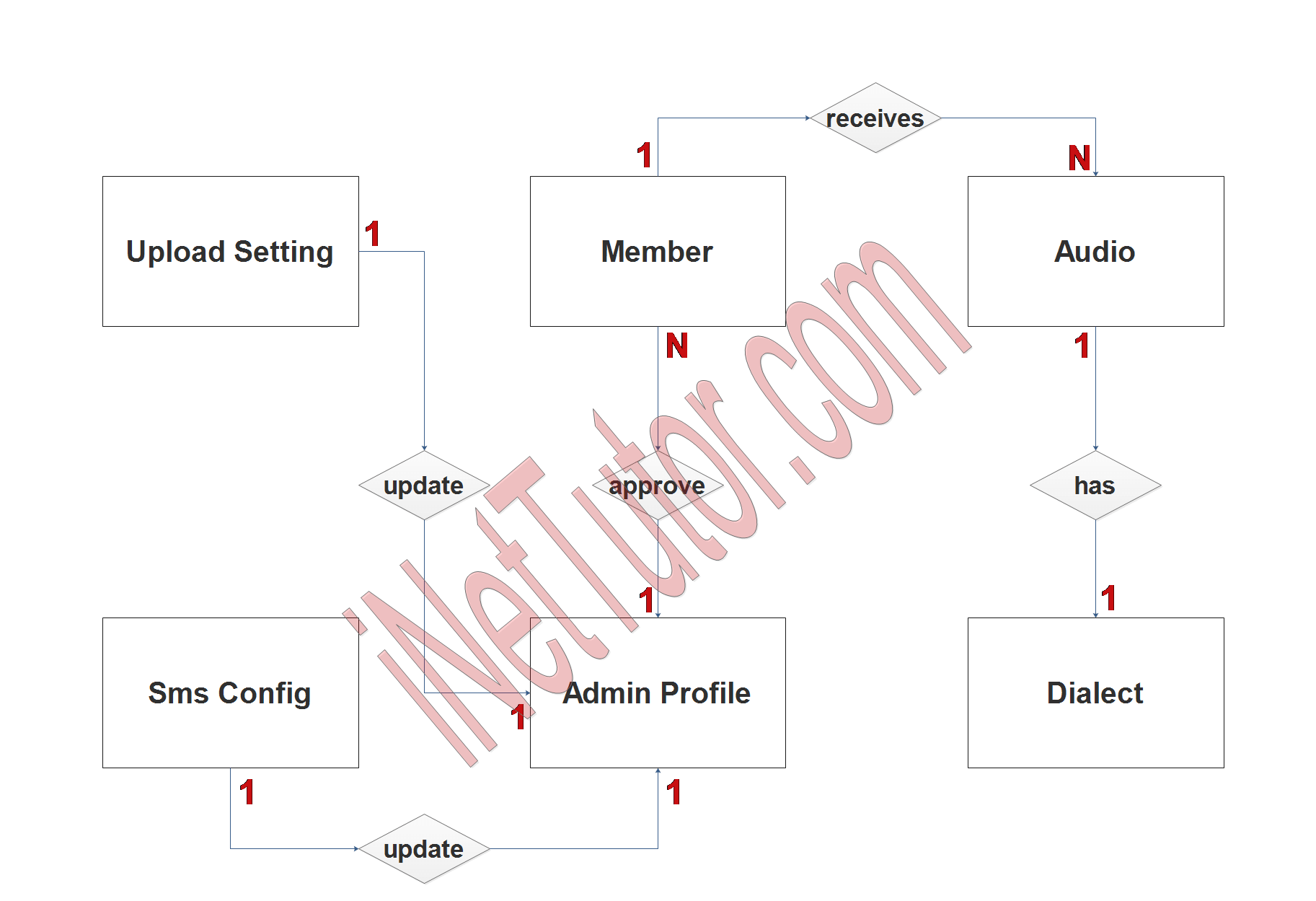
Step 3. The last part of the ERD process is to add attributes to our entities.
Member Entity has the following attributes:
- Member ID – primary key represented with underline
- ID number
- First name
- Middle name
- Last name
- Gender
- Address
- Contact
- Email address
- Profile picture
- Username
- Password
- Account status
- User ID – foreign key
Audio Entity has the following attributes:
- Audio ID – primary key represented with underline
- Member ID – foreign key
- File name
- Description
- File size
- Duration
- Dialect id – foreign key
- Status
- Transcript conversation
- Date
Dialect Entity has the following attributes:
- Dialect ID – primary key represented with underline
- Language name
- Description
Admin Entity has the following attributes:
- User ID – primary key represented with underline
- Username
- Password
- Email address
- Contact number
- Avatar
Upload Setting Entity has the following attributes:
- Setting ID – primary key represented with underline
- Max size allowed
- File type allowed
- Enable sms
- Updated by – foreign key
SMS Config Entity has the following attributes:
- Config ID – primary key represented with underline
- API code
- API password
- Updated by – – foreign key
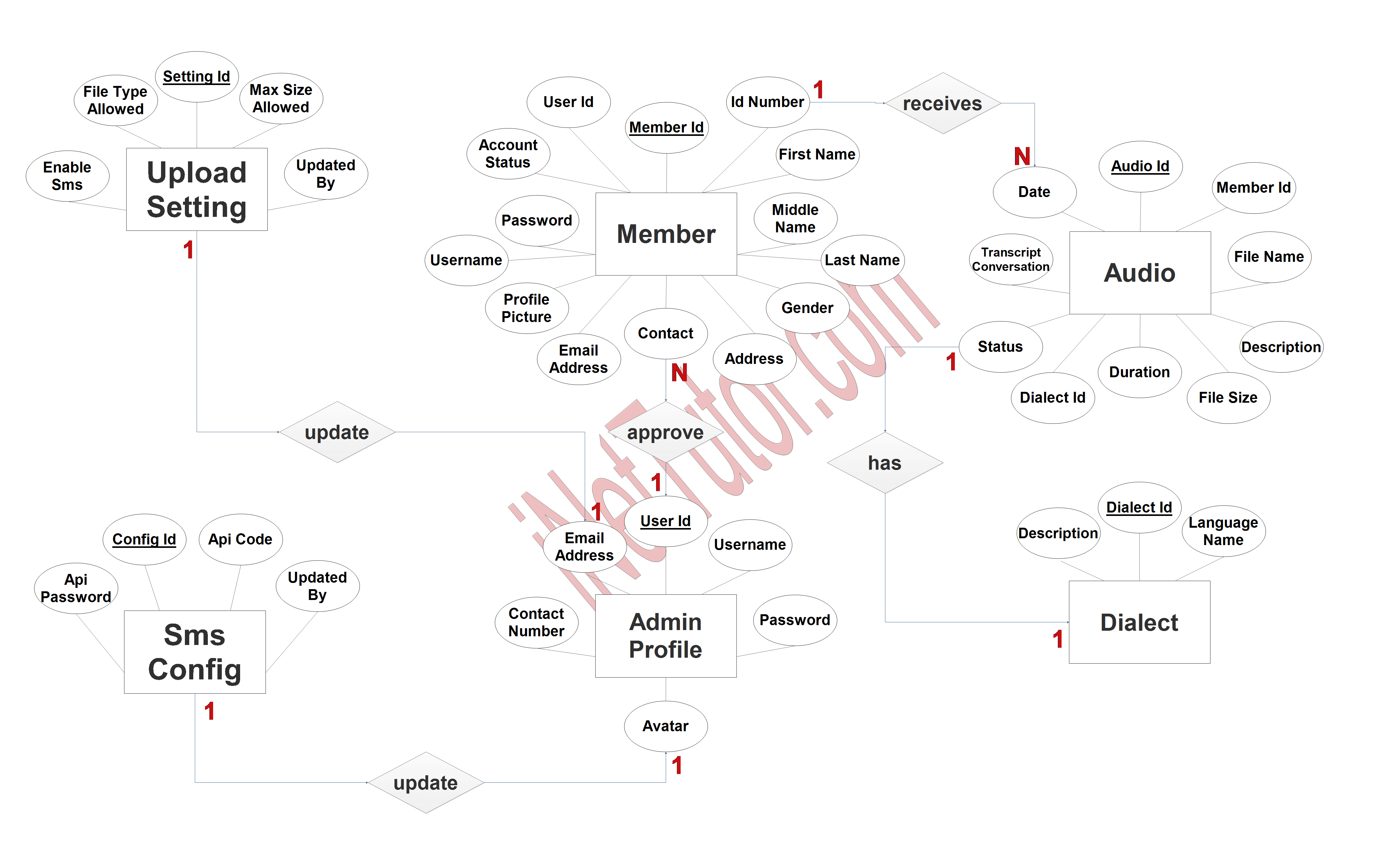
Summary
When it comes to visualizing the relationships between the various things in your system, entity relationship diagramming is a fantastic tool. This can assist you in better understanding how the system operates, as well as in identifying and correcting faults within the system. By understanding how the various entities interact with one another, you can have a greater knowledge of how the system functions and how it could be improved further. Using entity relationship diagrams, you may make improvements to your systems and manage them more effectively. It is a highly powerful tool.
We hope that this will help you in creating an Entity Relation Diagram for the project related to Medical Transcription System.
In addition, we will also give you a PowerPoint or Video Presentation for the entire ER Diagram. Make sure you visit and subscribe to our YouTube channel to see the videos.
You may visit our Facebook page for more information, inquiries, and comments. Please subscribe also to our YouTube Channel to receive free capstone projects resources and computer programming tutorials.
Hire our team to do the project.
Related Topics and Articles:
IPO Model Conceptual Framework of Medical Dictionary Application
Transcribe Medical System Database Design
IPO Model Conceptual Framework of Transcribe Medical – Medical Speech to Text Converter
Online Medical Record System Free Source code in Bootstrap
Medical Transcription Platform Free Template Source code
